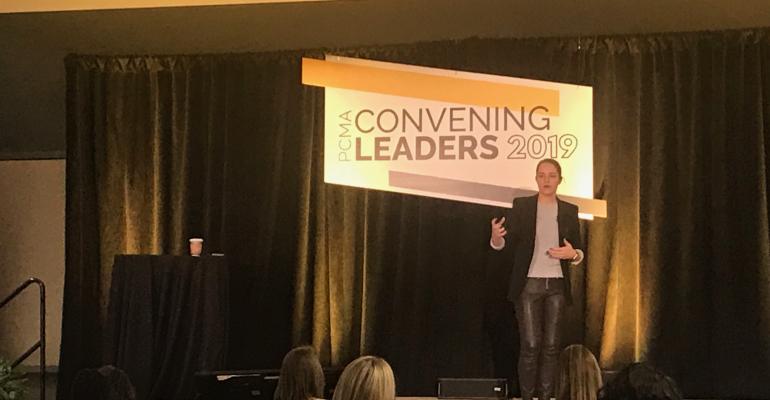In his keynote address at the Professional Convention Management Association's Convening Leaders conference in Pittsburgh, marketing guru Seth Godin implored organizaions to create and tell unique stories about their events. But it was a breakout session later that day where attendees learned the details of how to actually do it.
Melanie Deziel, founder of content-marketing and brand-storytelling firm StoryFuel, led a session titled "Optimizing Your Event Content Strategy to Engage All Stakeholders." Building on Godin's theme, Deziel noted that compelling content marketing material attracts more new registrants, engages attendees longer, deepens speaker engagement, and maximizes sponsor value. However, "many event teams struggle with content creation because there are no natural confines—there are so many things you can talk about that you don't know where to start."
To solve this problem, Deziel said that organizations can use the "what, when, and who" formula to identify the goals, timing, and audience for content, which clarifies the types of content that would be most effective for each stakeholder segment. For instance, the "what" element that represents the goals of the content should change depending on time of year; creating FOMO (fear of missing out) for both attendees and sponsors should become a stronger goal as the event's registration deadline approaches.
As a result, content formats should evolve throughout a campaign: Traditional testimonials that are used well ahead of the registration deadline should give way near the deadline to short videos that deliver highlights of the on-site experience.What's more, calls to action should accompany content that's pushed out near those deadlines for attendee and sponsor participation.
Similarly, the content sent out to speakers should be different before and after the event. Sending custom visuals and web links related to presenters’ sessions will encourage them to use that content to promote the event across their social media channels. And afterwards, repurposing educational content from the event not only benefits attendees (whom the association can also reward for sharing with nonattendees) but it also entices presenters to promote the content to nonattendees too. The result is greater event exposure across new audiences.
In the end, Deziel stressed that most content, especially user-generated, is not that difficult to match up with an effective format for presenting it. But if marketing decision-makers arbitrarily assign goals—i.e. "we must create three white papers, five audio interviews, and 10 videos to use for our next event"—that’s when you get ineffective content and wasted money and effort. "If you have cool visuals, or interesting sound bites, or a topic that requires explanation or an infographic, just go with it and let the content speak for itself," Deziel said. "Don't force the format to meet quotas."





